Catch of The Day! Invasive Fish Leather Makes Waves for Coral Reefs
At Everything To Sea, we’re always excited to explore innovative ways to protect our oceans and marine life. We found an article on nicenews.com which is about sustainable fish leather (edited for brevity, below). It’s made from the invasive lionfish species, and aligns with our commitment to environmental conservation and responsible travel.
As a company that values the beauty of our seas, we understand the importance of preserving coral reefs and maintaining the delicate balance of marine ecosystems. Now, we know you’re probably thinking, “But wait, aren’t you guys all about naked sailing trips?” And you’re right! But we also care a ton about what’s happening to our oceans beyond our boat decks. This clever idea of transforming an invasive fish species into an eco-friendly product is brilliant!
Come on our sea trips in The Coral Triangle – there’s a good chance to see lionfish close up, while snorkeling with us.
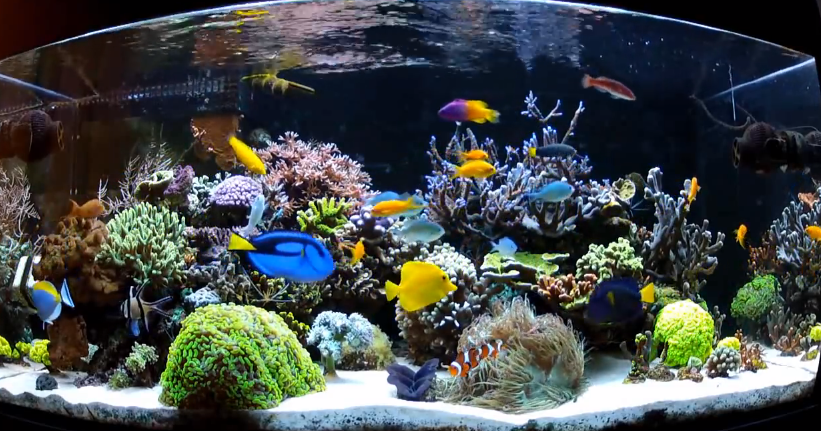
The lionfish’s show-stopping appearance makes it a star of many home aquariums. But in the wild, its presence is often sinister.
Avid diver Aarav Chavda told The Guardian he became increasingly depressed witnessing the devastation the invasive species wrought on Florida’s tropical reefs. Then, he devised a plan to harvest lionfish and use their hides to craft sustainable, luxury leather goods.
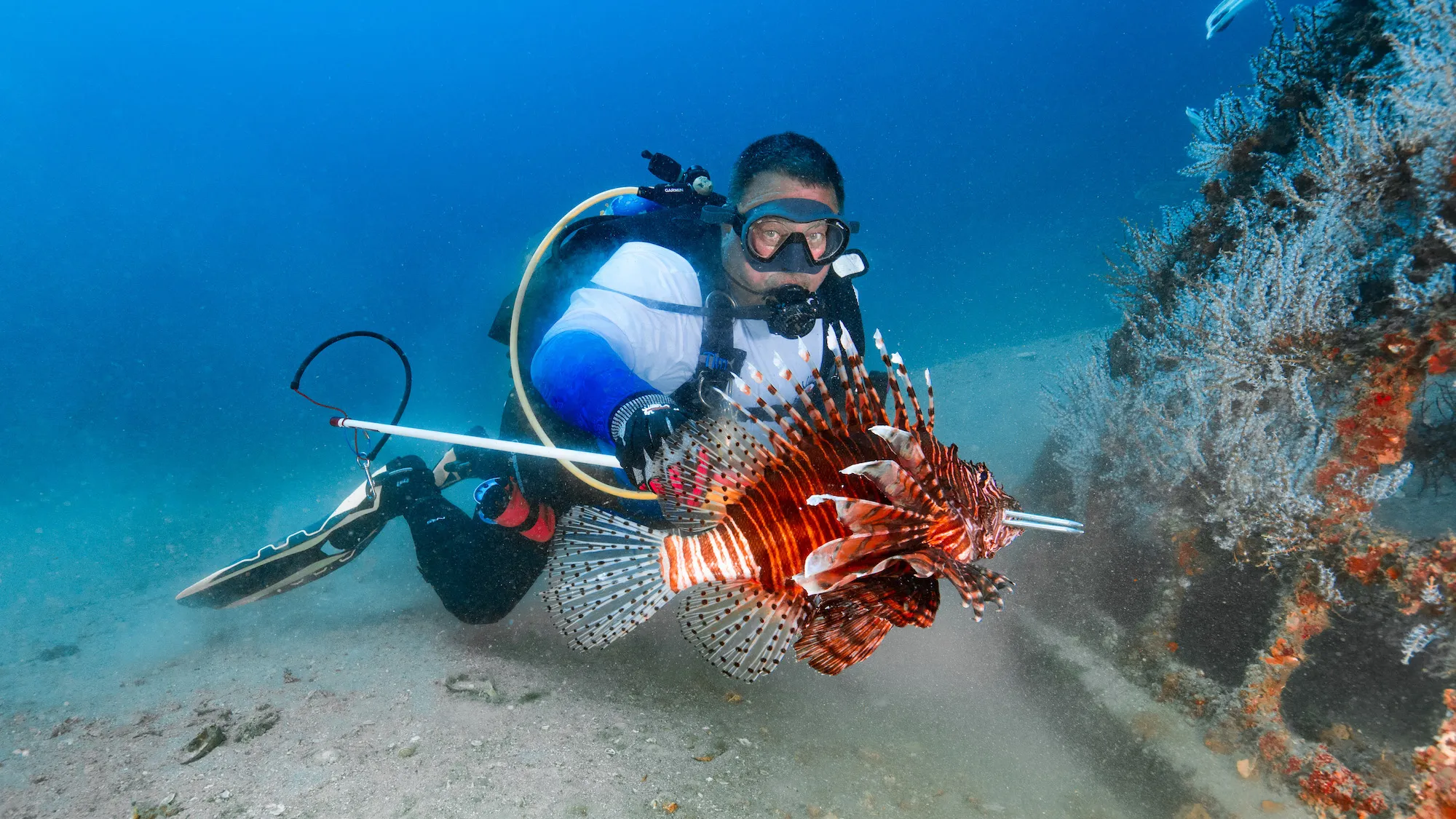
Chavda and his childhood friend, Roland Salatino, founded startup Inversa, which tans and dyes lionfish hides and sells them to partners that create various high-end accoutrements like wallets, belts, and purses. On World Oceans Day, Chavda and his team were named one of nine finalists in the Global Ocean Resilience Innovation Challenge (Oric).
While it’s thinner than traditional leathers, fish leather is stronger and more durable than many others as its fibers run crossways. It’s also far more sustainable: Whereas leathers made from cows and sheep require immense natural resources and contribute to deforestation, soil erosion, and carbon dioxide pollution, lionfish leather preserves ecosystems. According to Chavda, one hide can save up to 70,000 native reef fish.
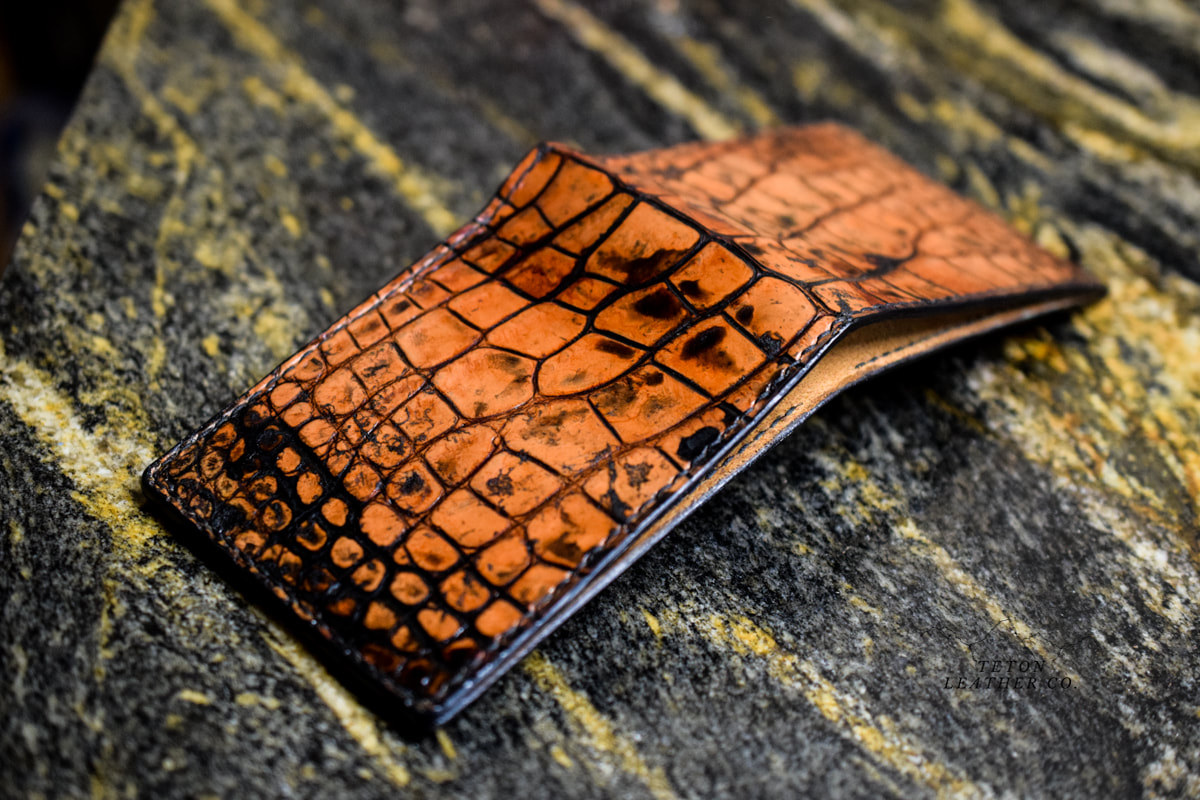
Within the past few decades, lionfish have wreaked havoc in the Atlantic, Caribbean, Mediterranean, and Gulf of Mexico, where they insatiably devour local populations of smaller fish and mollusks. A 2016 study published in Scientific Reports found that a single lionfish gobbled up to 79% of juvenile marine life within about five weeks of entering an ecosystem. And unlike many predators who move along once the food supply runs low, lionfish swallow up entire populations. A lionfish invasion can substantially decrease coral reefs, too, according to Vox, because they kill off beneficial species like parrotfish, which eat algae off corals and prevent it from overtaking the reefs.
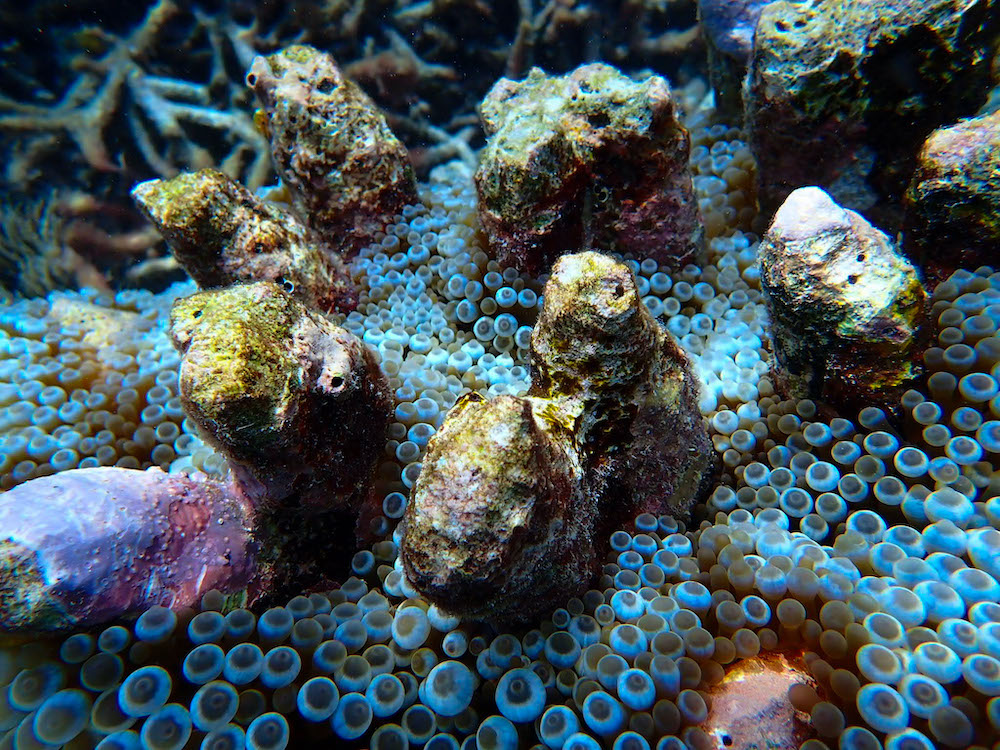
Indigenous to the South Pacific and Indian Oceans and the Red Sea, the lionfish is thought to have been introduced to the Atlantic sometime around 1985, when a lone fish was sighted off the Florida coast. The population gradually increased and spread throughout the 1990s, then exploded after 2005. The venomous predatory species has no natural predators outside its native range and reproduces year-round, with a mature female releasing about 2 million eggs annually.
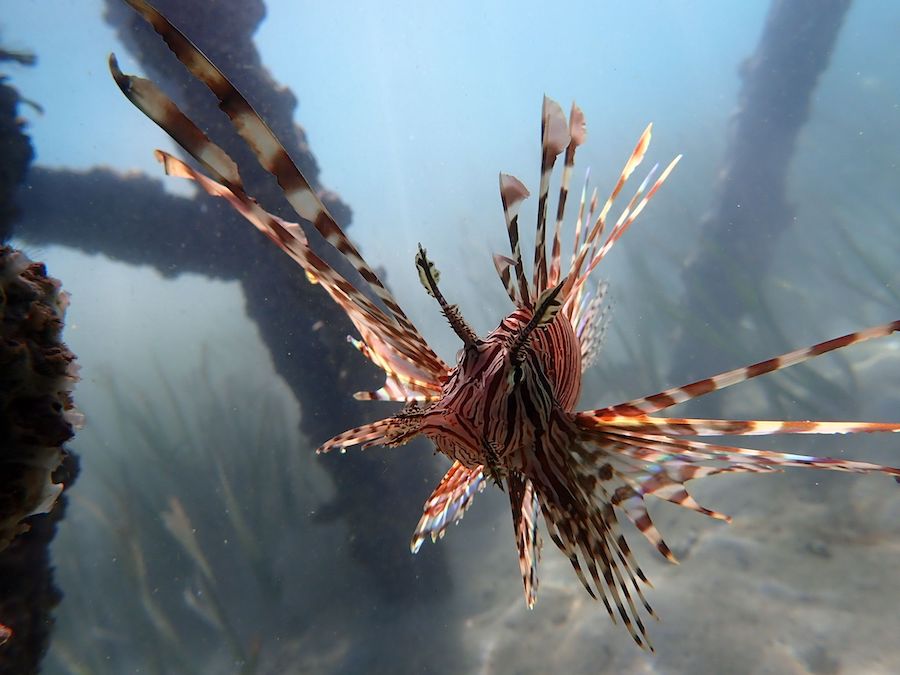
“We know there are solutions for some of the problems — such as coral-friendly sunscreens help protect the reefs — but nobody’s been able to do anything about the lionfish,” Chavda told The Guardian.
Tell us – have you ever seen a live lionfish? What do you think of them? And what do you think of the efforts to keep them from wreaking havoc?


Enjoyed your nude pics with travel opportunities,
Thanks! Have you traveled with us yet? We’d love to hear about it! We could even do a blog post on your experience, if you’d like!
Kindly share with us which companies are using the leather so we can do our part and buy some of the finished product. And do our part. Thanks in anticipation.
Sure! Check out inversaleathers.com, they have some amazing products… not cheap, but truly impressive. Just like Everything To Sea! 😉
Great
great website and blog
Thank you, Paul!